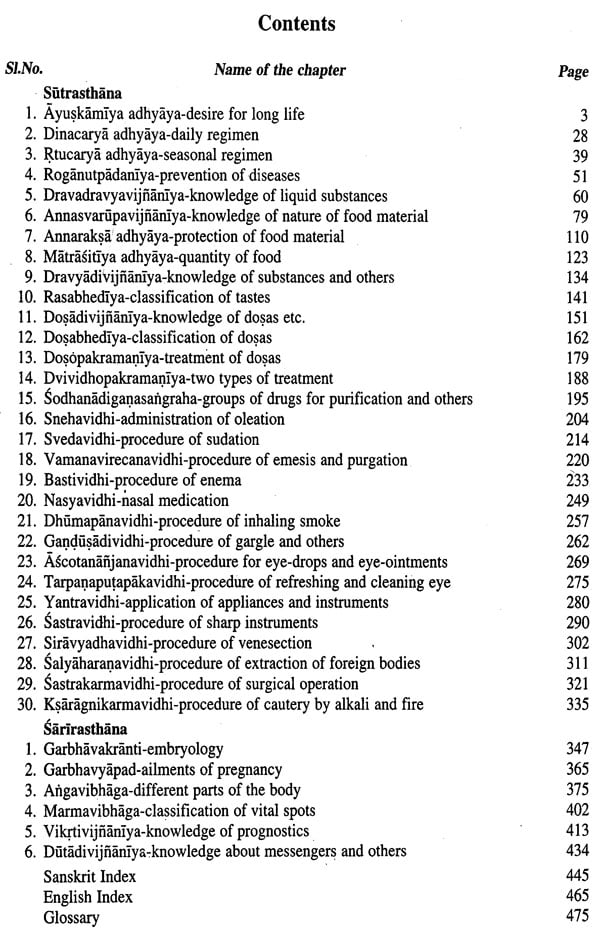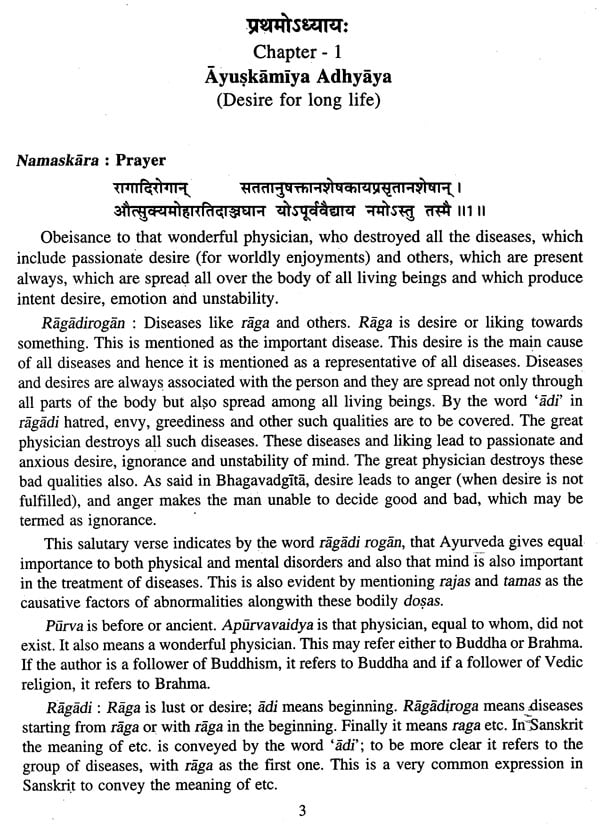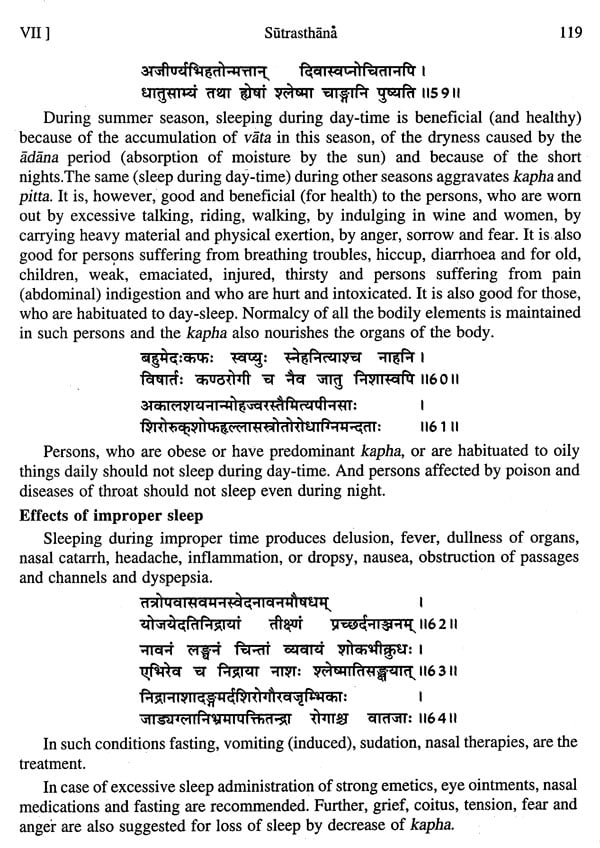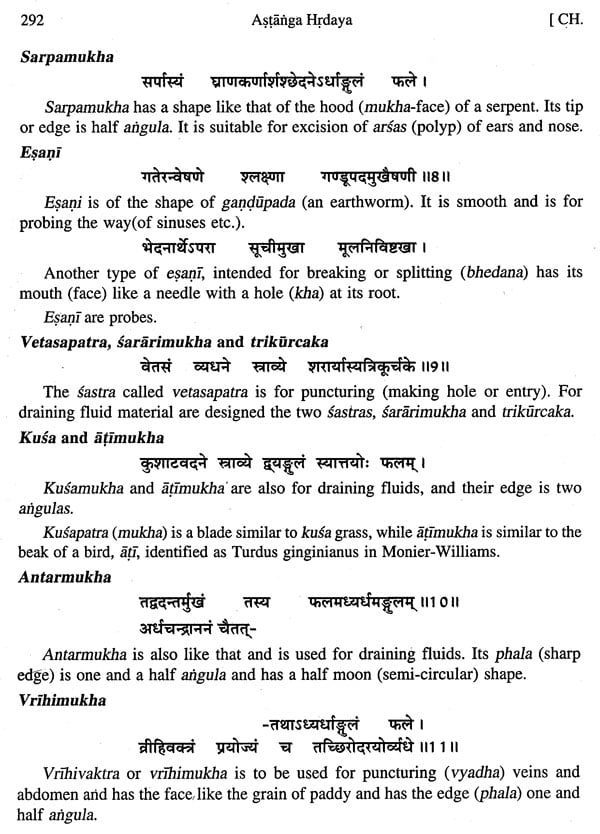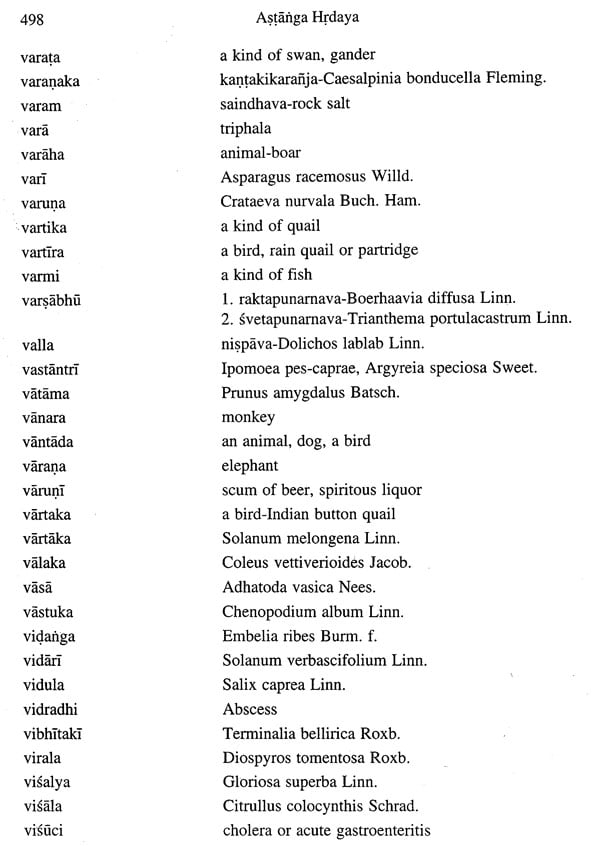
Astanga Hrdaya of Vagbhata
Book Specification
| Item Code: | NAW357 |
| Author: | B. Rama Rao |
| Publisher: | Chaukhambha Visvabharati , Varanasi |
| Language: | Sanskrit and English |
| Edition: | 2016 |
| ISBN: | 9789381301463 |
| Pages: | 504 |
| Cover: | PAPERBACK |
| Other Details | 9.50 X 7.00 inch |
| Weight | 800 gm |
Book Description
Astanga Hrdaya is divided into six sections-sthanas. 1. Sutrasthana dealing with principle, 2. Sarirasthana -anatomy, 3. Nidana-diagnosis. 4. Cikitsa-treatment of general diseases, 5. Kalpa-siddhi-preparation of recipes, purificatory procedures etc. 6. Uttarasthana-remaining seven branches. Thus all the subjects of Ayurveda are dealt with in 120 chapters in a lucid manner without complicated arguments and discussions.
He worked for a long time in Indian Institute of History Medicine, Hyderabad in different capacities and as director for more than two decades. During his tenure in IIHM he contributed immensely for the development of the research activities and also of Museum and others pertaining to the history of Medicine in India in general and history of Ayurveda in particular. He collected information relating to health and medicine from non-medical sources like kavyas, puranas, inscriptions, Archaeological sources and traveller's accounts etc. He also served as the in charge of Dr. A. Lakshmipati Research Centre for Ayurveda and Literary Research Unit in Chennai and retired as the Director of Indian Institute of Panchakarma in Kerala and thus gained experience in different fields of Ayurveda. He later worked as the principal of Dharma Ayurvedic College, Sriperumbudur, Tamilnadu.
Another important contribution of Dr. Rao is the collection of information and study of palmleaf and paper manuscripts particularly of Ayurveda in Sanskrit and Telugu. He brought to light several unknown valuable works on Ayurveda and allied subjects.
He is associated with many institutions like National Research Commission for History of Science, Editorial Boards of Indian Journal of History of Science, Council of Indian National Science Academy and Central Council for Research in Ayurvedic Sciences.
In Indian literature, more than ten books are known as composed by Vagbhata. Among them Vahatanighantu, Astangahrdaya, Astangasangraha, Vamanakalpa, Padarthacandrika, Vagbhatakosa and Rasaratnasamuccaya appear to be Ayurveda works. Vagbhata I or Vrddhavagbhata, Vagbhata II or Vagbhata, Madhyavagbhata and Rasavagbhata are the four authors known in Ayurveda literature. Of the above four, Madhyavagbhata is known from the quotations in Ratnaprabha commentary, by Niscalakara of Cakradatta and there are no other evidences to support this. Rasavagbhata is the author of Rasaratnasamuccaya and is definitely different and later than the authors of Astangahrdaya and Astangasangraha, which are much earlier to Rasaratnasamuccaya. The identity of authors of Astangasangraha and Astangahrdaya is controversial.
Both Astangasangraha and Astangahrdaya are popular works. Vagbhata, author of Astangasangraha states that he compiled the work as an essence of all earlier classics. He was the son of Simhagupta of Sindhu region. Father and grandfather of Vagbhata were also great Ayurveda scholars. Vagbhata of Astangahrdaya states that he compiled Astangahrdaya after churning the ocean of Ayurveda called Astangasangraha, indicating indirectly that he is the author of Astangasangraha also. Many similarities and identical passages are found in these two works apart from differences in some views. This led to the controversy about their identity. For detailed views as well as brief survey the following may be consulted :
1. Sarma, P.V.: Vagbhatavivecan-a comprehensive work on Vagbhata in Hindi by Prof. Priyavrat Sarma. It deals with all aspects of Astangasangraha, Astangahrdaya and Vagbhata based on internal and external evidences; 1968, Varanasi.
2. Sarma, P.V. (ed): History of Medicine in India, article on Vagbhata by B. Rama Rao, pp. 205-221, Indian National Science Academy, 1992, New Delhi.
3. Vogel, Claus: Vagbhata Astangahrdaya, English translation of Tibetan version Wiesbaden, 1965, Introduction.
4. Astangasangraha: Vol.-I, English translation by K.R. Srikanthamurthy, Introduction; it briefly discusses all points regarding identity of Vagbhatas, Astangasangraha and Astangahrdaya; Chaukhambha Orientalia, 2002, Varanasi.
5. Sarma, P.V.: Ayurved ka Vaijnanik Itihas in Hindi 1975, Varanasi, pp. 172-193 (relevant passages).
6. Meulenbeld, G.J. : A History of Indian Medical Literature, Vol.-IA & IB, relevant passages, Egbert Forsten, 1999, Groningen.
The following verse of Astangahrdaya states that it is a summarized form of Astangasangraha: A big heap of nectar has been obtained in the form of Astangasangraha after churning the big ocean of Ayurveda with eight branches; from this a separate treatise has been evolved in the present form and it is for the satisfaction and pleasure of those who are capable of undertaking only limited efforts; but gives significant result. By this statement it is inferred that Vagabhata compiled both Astangahrdaya and Astangasangraha. A summary of different important views about the identity of both Vagabhata is thus.
**Contents and Sample Pages**
